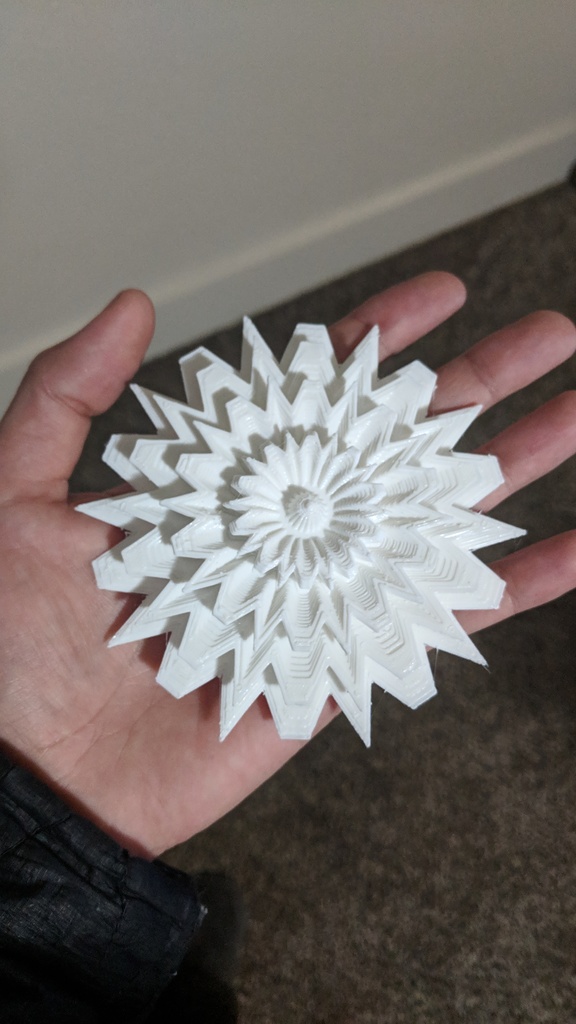
Recursive Flower
thingiverse
Crafting a Recursive Flower in Python within Blender's Realm Delve into the realm of programming and 3D modeling as we embark on an adventure to create a stunning, intricately designed recursive flower using Python. In this tutorial, we will explore the steps necessary to bring this beautiful creation to life within the powerful environment of Blender. First, let us establish our objective: to design a flower that exhibits self-similarity at multiple scales, creating a mesmerizing pattern that draws the viewer's eye. To achieve this, we will leverage Python's extensive libraries and the flexibility of Blender's API to craft a recursive algorithm capable of generating such intricate designs. Our journey begins with the basic structure of our flower. We will create a simple flower shape using Blender's modeling tools, which we can then use as a foundation for our recursive design. This initial shape will serve as the seed from which our flower grows, its intricate patterns unfolding like the delicate petals of a real bloom. Next, we will write the Python code that brings our vision to life. We'll utilize Blender's API to create a script that generates a series of flowers, each one nested within the last, creating an endless cascade of beauty and intricacy. This recursive process allows us to achieve a level of detail and realism that would be impossible to accomplish by hand. As we delve deeper into the code, you will see how Python's powerful syntax and data structures allow us to express complex ideas with simplicity and clarity. The logic behind our algorithm is clear and concise, making it easy to follow along and understand the process step-by-step. With each iteration of the flower, we add more detail and depth, creating a truly captivating piece of digital art. Our recursive flower is not just a static image; it's an interactive, immersive experience that invites the viewer to explore its intricate patterns and structures. Finally, once our script has generated our masterpiece, we can refine it further using Blender's powerful tools for texturing, lighting, and rendering. This process allows us to add color, depth, and realism to our flower, making it a truly breathtaking work of art that demands attention and admiration. Through this tutorial, you will learn the fundamentals of Python programming as well as the ins and outs of working with Blender's API. By the end of this journey, you will have gained the skills necessary to create your own intricate designs using recursive algorithms and 3D modeling software. So let us begin our adventure into the world of recursive flowers, where art meets science in a beautiful fusion of creativity and coding!
With this file you will be able to print Recursive Flower with your 3D printer. Click on the button and save the file on your computer to work, edit or customize your design. You can also find more 3D designs for printers on Recursive Flower.
